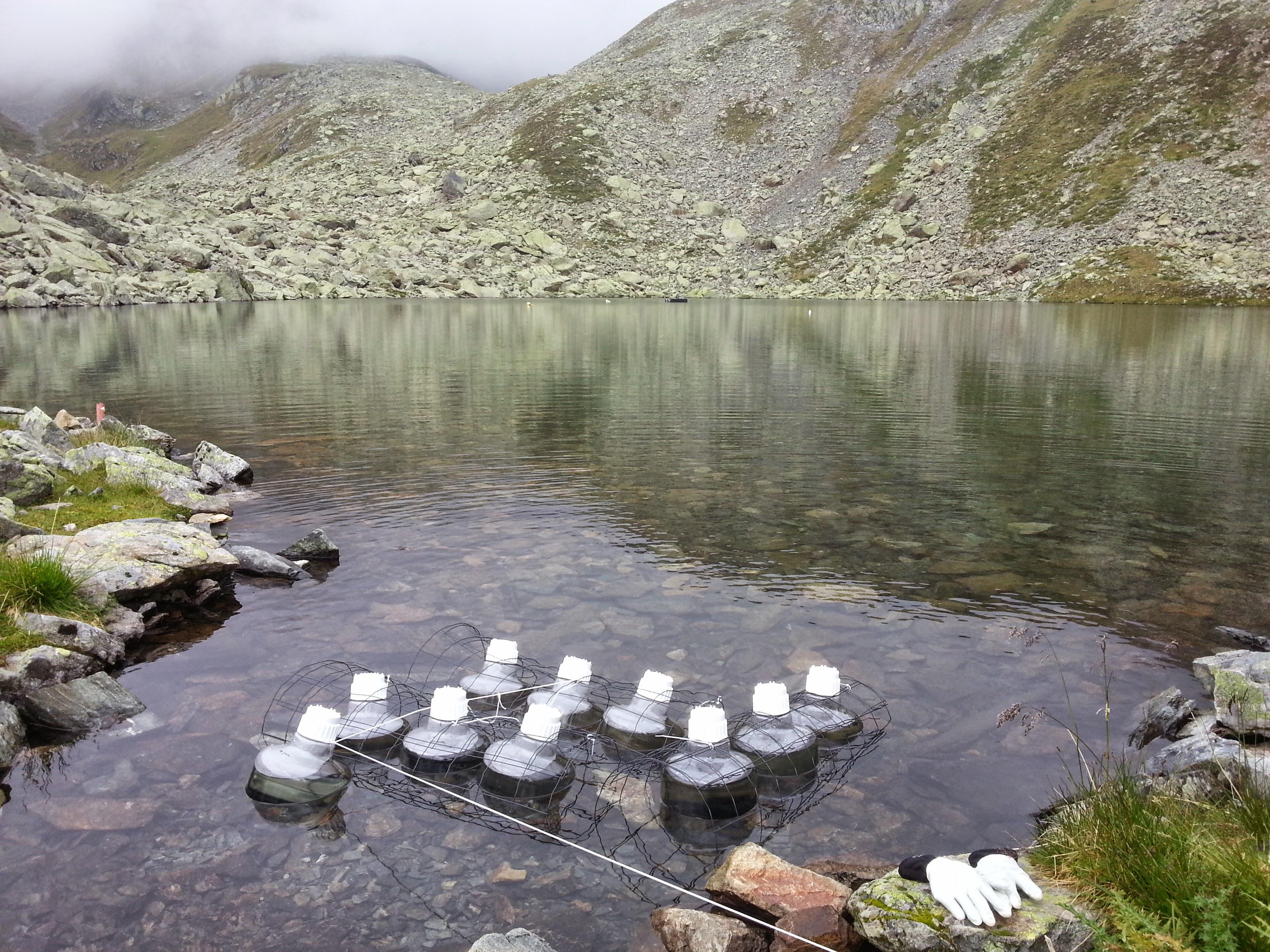An EPFL scientist along with colleagues from universities across Europe have completed the first-ever quantitative study of the changes that soil organic matter from forests can cause in high-altitude and high-latitude lakes once it's dissolved in the water
Treelines are rising around the world as a result of global warming. Depending on the region, they're climbing between 10 and 100 meters per year - bringing forests ever-closer to high-altitude and high-latitude lakes. This will undoubtedly have an impact on both ecosystems. For the first time, a team of scientists has taken a close look at what the possible consequences could be on a molecular level. Their findings, published recently in Nature Communications, suggest that rising treelines could affect the dissolved organic matter (DOM) in high-altitude and high-latitude lakes and alter the biogeochemical composition of lake water. Specifically, the scientists observed that natural bacteria exposed to this new carbon may become less effective in producing biomass - creating a potential source of greenhouse gas emissions. This discovery is particularly important given the thousands of such lakes on our planet.
Soil organic carbon is composed differently depending on whether it's located in an alpine grassland or a forest. Until now, scientists weren't sure how the soil organic carbon contained in soils would react once it seeped into alpine and subarctic lakes. These lakes already contain small amounts of DOM, which plays a vital role as resource for natural bacteria. But as the treeline advances, the soil composition surrounding the lakes will change and when it rains, or as snow melts, the organic carbon contained in the soil will be carried into the lakes. This is the process that the research team - including EPFL's Hannes Peter - studied. Peter is an ecologist and biogeochemist at EPFL's River Ecosystems Laboratory (RIVER), part of the ALPOLE research center on Alpine and polar environments in Sion.

Lakes in northern Finland and the Austrian Alps
Lake bacteria generally respond to DOM in one of two ways: either they feed on it and grow to produce the biomass that forms the basis of the food chain; or they process it inefficiently and respire it as CO2. To study these mechanisms more closely, the researchers carried out field experiments at a high-latitude lake in northern Finland and a high-altitude one in Austria, and paired this with lab experiments and analyses.
Our plan was to expose lake bacteria to organic carbon from different types of soil.
"Our plan was to expose lake bacteria to organic carbon from different types of soil," says Peter. "We collected lake water samples and added soil-derived DOM from both above and below the treeline, and then observed the bacteria's response. We wanted to know whether they would produce more biomass or instead release CO2. The answer was that when exposed to soil-derived DOM from below the treeline, the bacteria emitted more CO2."

Resolving individual carbon molecules
The team used a sophisticated, high-precision instrument installed at a partner university in Germany to conduct their analyses. With this instrument, they were able to examine each DOM molecule individually. "The advanced technology and high-performance systems now available for analyzing carbon let us see inside the 'black box,'" says Peter. "We identified over 2,500 molecules contained in the DOM and were able to understand which ones the bacteria metabolized the fastest. We also studied the entire decomposition process. That's how we were able to conclude that bacteria in Alpine lakes may emit more CO2 when the treeline rises." He goes on to explain that the consequences could be significant. "Our study was just the first step. We looked only at how efficient the bacteria are in handling the DOM. More research is needed to determine how the additional carbon will affect the environment. But what's fascinating about bacteria is how fast they can adapt to changing conditions."
Another group of scientists at EPFL's ALPOLE research center is also studying the effects of shifting treelines. Thien-Anh Nguyen, a PhD student at the Environmental Computational Science and Earth Observation Laboratory (ECEO), and her colleagues have developed an AI-driven program that maps forest expansion in the Swiss Alps over an 80-year period. The program is available in open source and clearly shows how the treeline has shifted towards higher elevations across the Vaud and Valais Alps. Nguyen and her colleagues trained their algorithms using thousands of photographs taken between 1946 and 2020 and provided by the Swiss Federal Office of Topography. The challenge was to train the algorithms effectively despite the broad range of image quality and resolution contained in the dataset. The program illustrates how rapidly the change is taking place, primarily owing to the higher temperatures and agricultural land abandonment - and it will be used to quantify the effect of these two factors. Nguyen's study is the first to map the progression of the Alpine treeline on such a large scale and at such a granular level.






